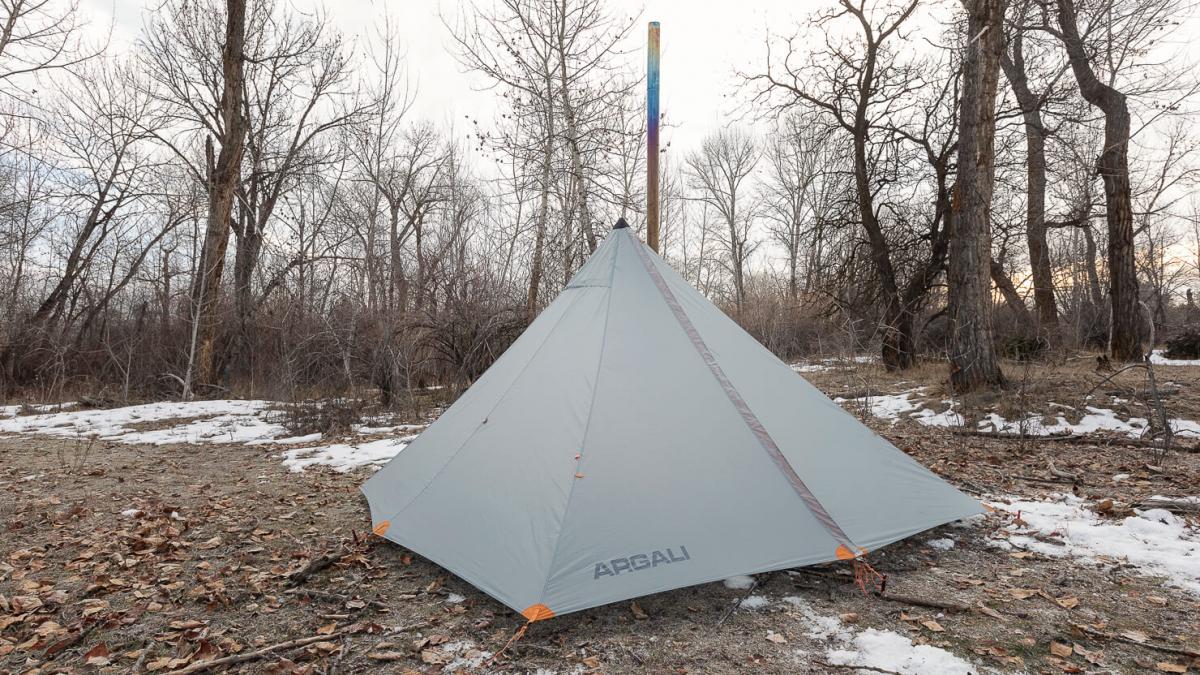
Tent Fabric for Backpack and Lightweight Tents
By Brad Brooks
When it comes to tent fabrics for backpacking and backpack hunting products there are a lot of different options on the market. Coatings, weights, tear strength, abrasion resistance, and material options can create a tangled web of options making it hard to compare and know whether the tent you buy is up for the use you intend to use it for. And while there are better options than others, it is important as the consumer to understand why a particular fabric is used so you can make an informed decision on whether a tent will perform as advertised.
You can't have the lightest and the strongest fabric at the same time. Not all nylon or all polyester fabrics are the same. The waterproof coatings on fabrics can vary widely in terms of quality, which will effect the longevity of your tent. And that is just the beginning. For a backpacking or backpack hunting tent you want the best fabric for the application, and to understand why we use a 20D ripstop polyester fabric on our rain fly's, we'll need to first do a deep dive on fabrics, coatings and waterproofness.
Full warning, this is a deep dive on tents, fabrics and coatings, and is not for the faint of heart. But, reading it will make you a more informed consumer and help you make better choices on tents.
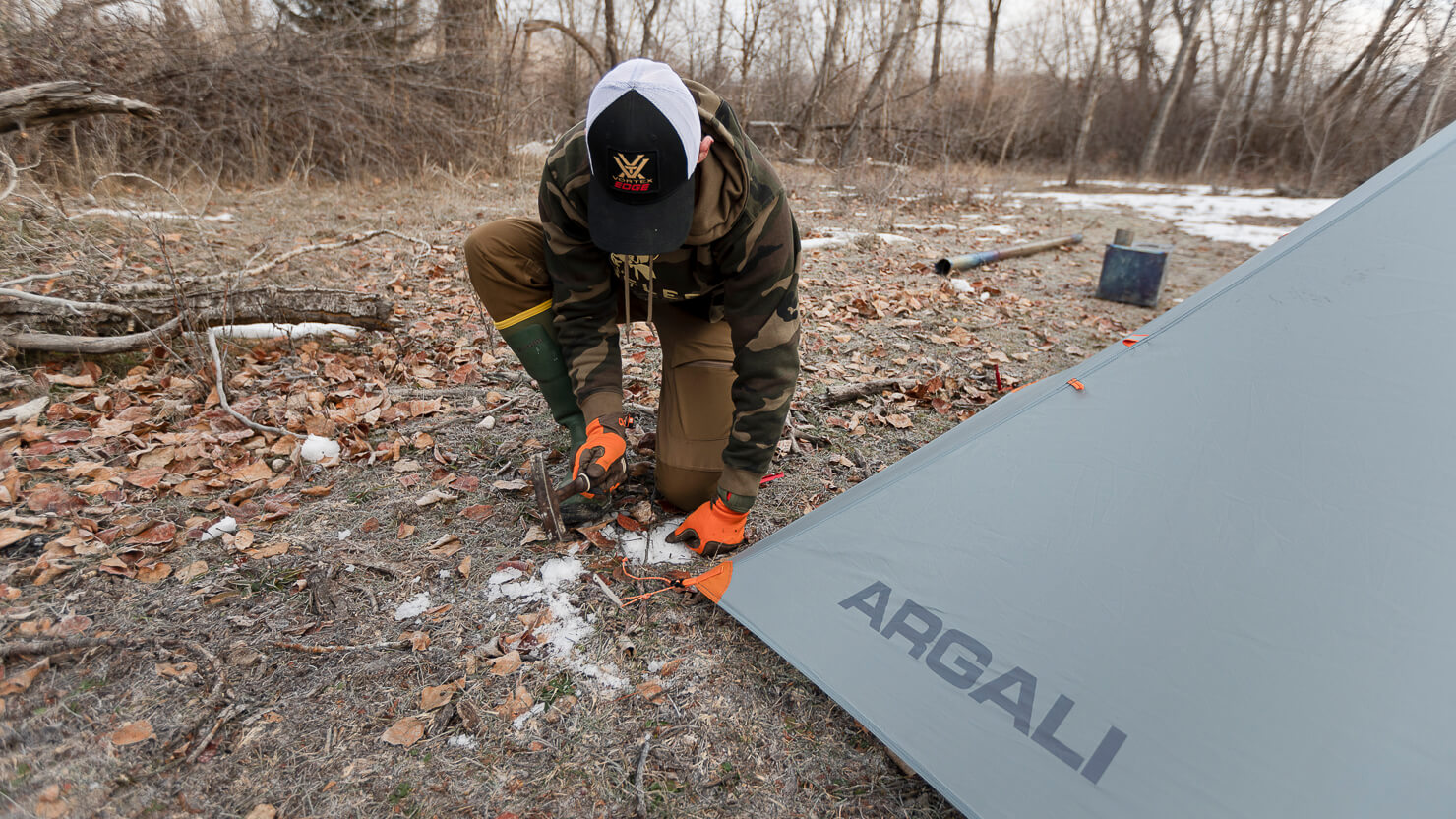
Polyester vs. Nylon
The vast majority of tents are made from nylon or polyester fabric. The exception is dyneema or HDPE laminated fabric tents, which is a great fabric but it is very pricey, in a category all its' own and the topic of another article. The traditional dogma in the backpacking tent world is that nylon is a superior fabric over polyester because nylon has better abrasion resistance, better tear strength, and therefore is a stronger fabric that can withstand abuse, especially in lighter weight fabrics. Polyester has been branded as an inferior, cheaper fabric by some. However, this simply is not true. Not even a little bit, but there is a good reason for this myth to be carried on today.
50 years ago when backpacking tents first started hitting the market, nylon fabrics, especially in lightweight tent fabric options, were superior to polyester due to technology in the fabric world at the time. And because they were the best option, demand for the fabric by backpacking tent companies fueled increases in technology and product development to make lightweight nylon fabrics better. It was a self-fulfilling cycle as fabric mills knew the demand was higher from tent companies for nylon. So, what do you do if you own a fabric mill when you know companies want lightweight nylon? You make more nylon and put your R&D into nylon.
But times change, and technology does as well. Fabric mills today can make lightweight, durable polyester fabrics, and to prove it, we can look at tensile and tear strength, which are two common tests done to compare tent fabrics for durability and strength. Tensile strength measures how much you can stretch a fabric before it breaks, and tear strength measures how much force is required to tear a fabric by moving a piece of it in opposite directions. The traditional refrain in the backpacking world is that nylon has better tensile and tear strength than polyester, but that isn't what the data says.
Not all nylon or poly fabrics are created equally, and there are some great nylon fabrics out there such as nylon 6.6, which is a tough fabric with great tear strength. But is it better than a comparable high quality poly fabric? No. Take a look at this strength test conducted by DuPont comparing thread tensile strength:

You will notice there is a small difference in the tensile strength of nylon 6.6 vs. a high quality poly fiber and nylon has the tiniest of advantages over poly in the the lab. This difference is incredibly small however, and the difference would be imperceptible in all real world applications when you are actually using the tent outside for a couple of very important reasons.
It is important to remember that nylon absorbs water unlike polyester, and once it gets wet its' tensile strength is compromised, meaning wet nylon will lose 10-15% of it's tensile strength and becomes substantially weaker than poly. So, in any type of field condition where you have wet, windy weather nylon is actually weaker than poly assuming the fabric weights are the same. And wet windy weather is usually when a tent's tear strength is put to the test.
The second factor that impacts tensile strength, and thereby fabric durability, is the sun. UV rays can significantly impact the durability of tent fabric, and nylon is much more susceptible to UV degradation. Even a week of intense sun on a nylon tent can reduce the tear strength of nylon by a fair margin. Polyester on the other hand hand is much less susceptible to UV degradation. The takeaway here is that a nylon fabric out of the box could be slightly "stronger" over a comparable weight poly tent, but after a little use in the sun and in any stormy weather that superiority is flipped.
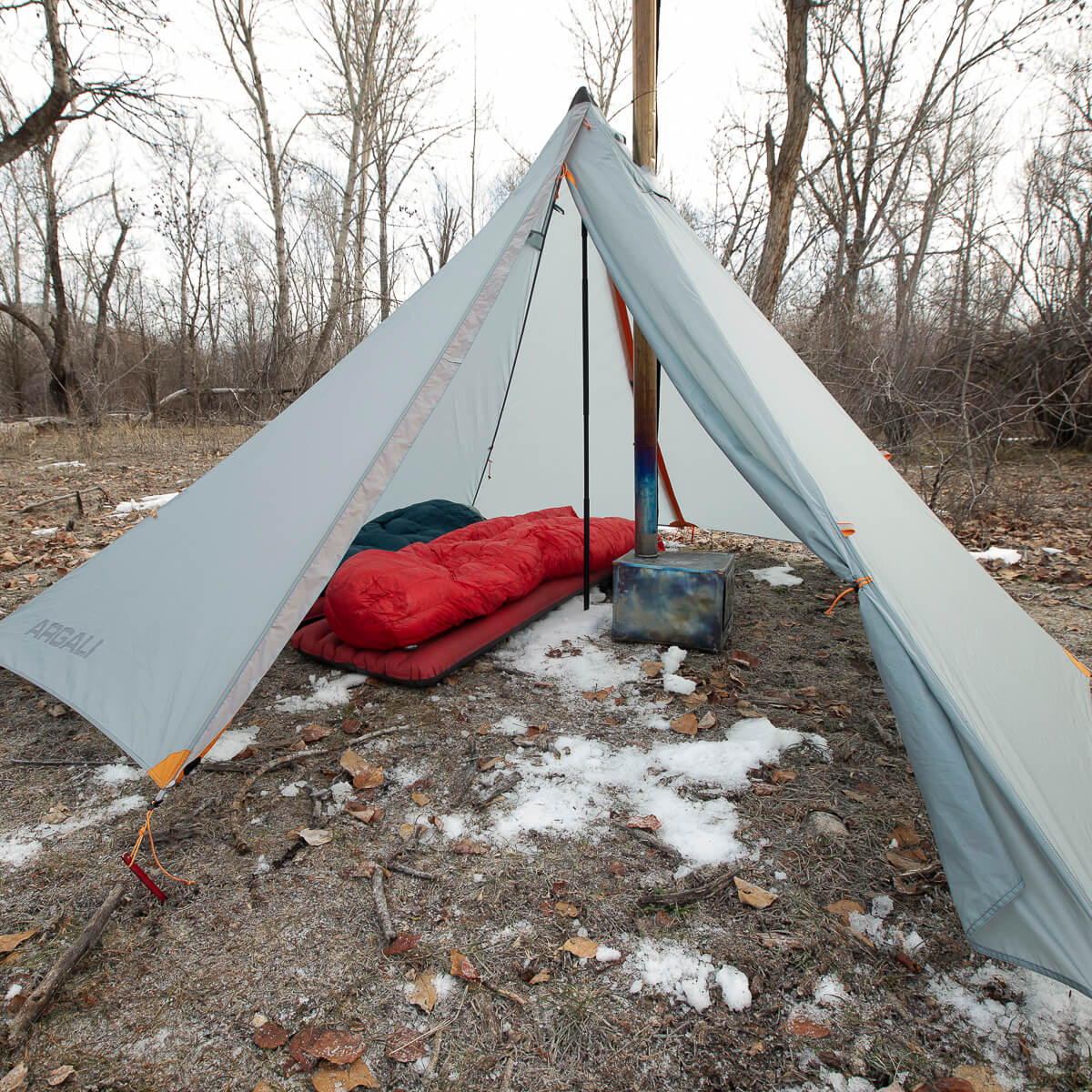
Tent Sag
One of the most important reasons we do not use nylon is because it is a water absorbing fabric. If you've ever used a nylon tent and there is a lot of condensation during the night, and it snows or rains, you will notice that the tent will sag significantly. This sciency article explains how nylon absorbs water, which I can't do since I'm not a chemist. The very nature of nylon makes it impossible to not absorb water, even when it is coated with a waterproof material like silicone, as silicone is incredibly porous to water vapor. Yes, you read that correctly. Nylon, even after it is coated with silicone, still absorbs water. And the amount of tent sag gets worse the larger the tent as the amount of fabric increases.
Nylon will strectch as much as 3.5%. That may not sound like a lot, but it is once you do the math. On a tent that is 130" long, such as our 4P is, that is 5" of sag. And when you add in the sag from the other tent panels, you have a serious loss of space inside the tent.
Polyester on the other hand, is naturally hydrophobic, meaning it does not absorb nearly as much water. Polyester's absorption rate is in the tenths of a percent. The result is that polyester doesn't sag when wet nearly as much as nylon. Some polyester tent fabric evangelists say it doesn't sag at all, but I would call it a very negligible amount of sag, especially for a floorless shelter. The result is that a polyester tent maintains it's usable space much better than a nylon tent. And maintaining usable space is important. If you have ever experienced the tent-collapsing feel of nylon fabric absorbing water you'll understand what I'm talking about. And because poly doesn't absorb water, your tent will be lighter in any condition where there is moisture and it will dry out more quickly.
Now, I need to make sure it is clear that even though we use polyester for a reason, nylon is not a bad fabric and does have a place for use in the tent world. In fact, we use nylon 6.6 in our bathtub floors because I like it better than a poly fabric where it will be constantly ground into the dirt, rocks and whatever else is beneath your sleeping pad. But when it comes to rain fly's, it just isn't a superior fabric for lightweight backpack tents.
Denier
Tent fabrics are nearly always described in terms of their weight, usually with a number ranging from "7D" up to 70D or higher. These numbers refer to the weight of the yarn used in the fabric, not necessarily the fabric itself, as fabrics are made from combining yarns. The number is based on the weight of 10,000 yards of a particular yarn. So a lower number will mean a lighter weight fabric. What really matters, and what is important to understand with denier, is that fabric deniers create a way to measure fabrics against fabrics.
We use a 20 denier (20D) fabric in our tents because we believe it provides a balance between durability and weight. 20D is on the lighter end of what you will see used in lightweight tents, but there are some tents using fabric as light as 10D. In our opinion, you want a tent that will hold up to some abuse so it has a long usable life, but it also needs to be light, especially for mountain use. We aren't suggesting 20D is a magic unicorn of fabric weights, but it strikes a balance we think is best suited to the application for 4 season backpack shelters, and particularly for backpack hunting where gear will get used and abused.
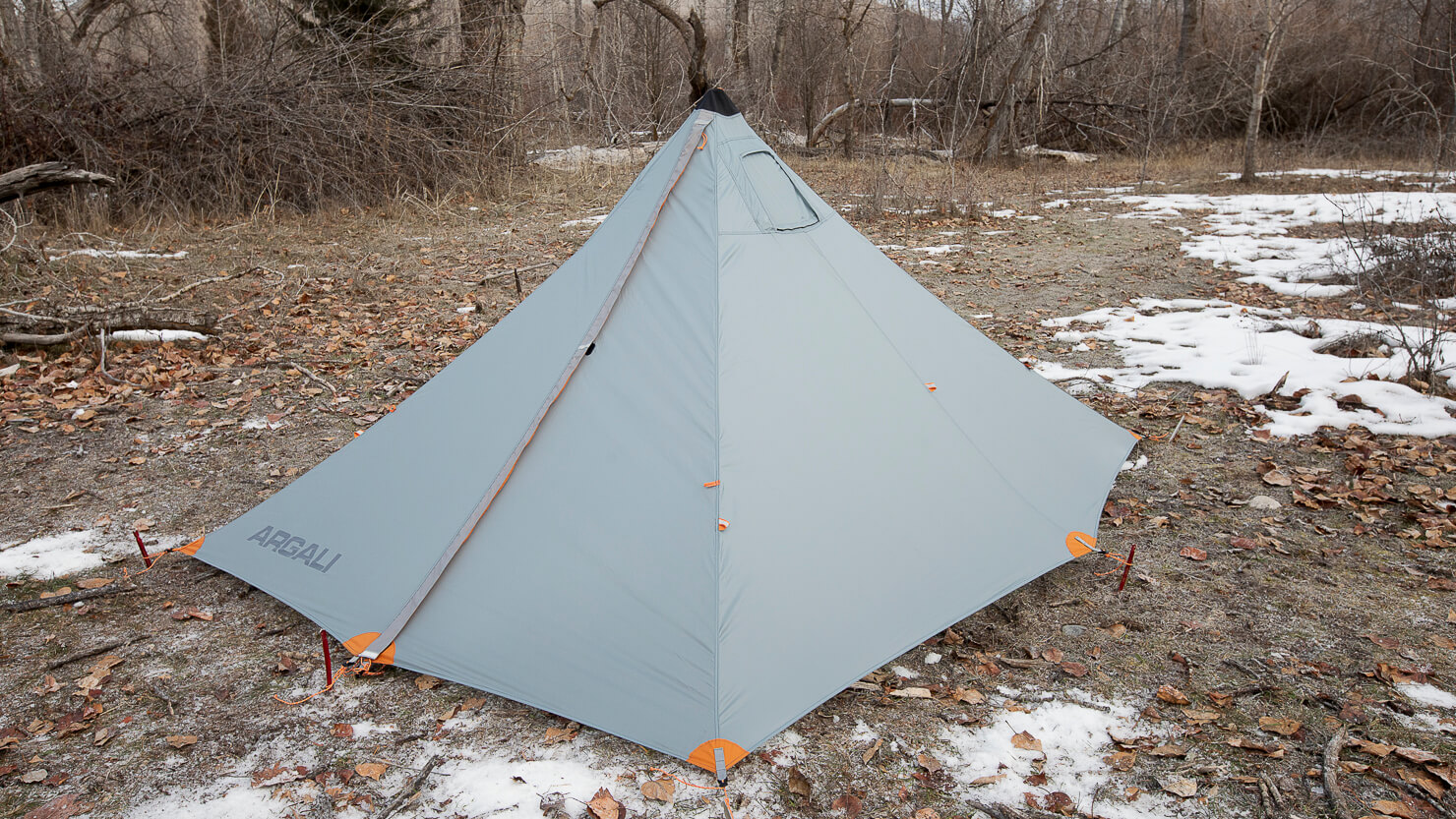
Waterproof Coatings
When a tent fabric comes out of the mill, it is typically coated with one of two materials: silicone (sil) and/or polyurethane (PU). There is also a new material called Polyethylene (referred to as PEU or PE) that is also being used, but its' application is not as broad. Each side of the tent fabric is coated separately which is why most tent fabrics will tell you what coating is on the outside vs. the inside (i.e. sil/sil or sil/PU).
PU is widely used on the inside of tents because you can use seam tape over it to tape seams, whereas silicone cannot be seam taped and usually requires someone manually seam taping the tent. PU is also used because it is considered a fire-retardant material (more on that later) and is compliant with seven states that have laws requiring tents to be made with an fire-retardant "FR" coating. The problem with PU is that it degrades over time and it actually decreases the tear strength of the fabric, making it weaker and less durable. Using PU also requires layering on more material to get the same amount of waterproofing as you do with silicone, which makes a tent heavier and bulkier.
Silicone actually penetrates into the tent fabric and increases the strength of the fabric. Silicone also requires less material to achieve a given waterproofness, and will therefore be lighter in weight. It is hands down a superior treatment for lightweight rain fly fabrics because it increases the tear strength of the fabric, less material is required to get the desired water repellency and it won't degrade over time like PU.
We use a sil/sil treatment on our tents because of the aforementioned advantages. However, because we use a silicone coated thread and four layers of fabric in our seams, our seams are naturally waterproof. There are some applications where PU has it's advantages, and we do use it on our bathtub floors where we want to have our seams taped to ensure no water will seep through even when you are laying on the fabric and pushing it against water/ground.
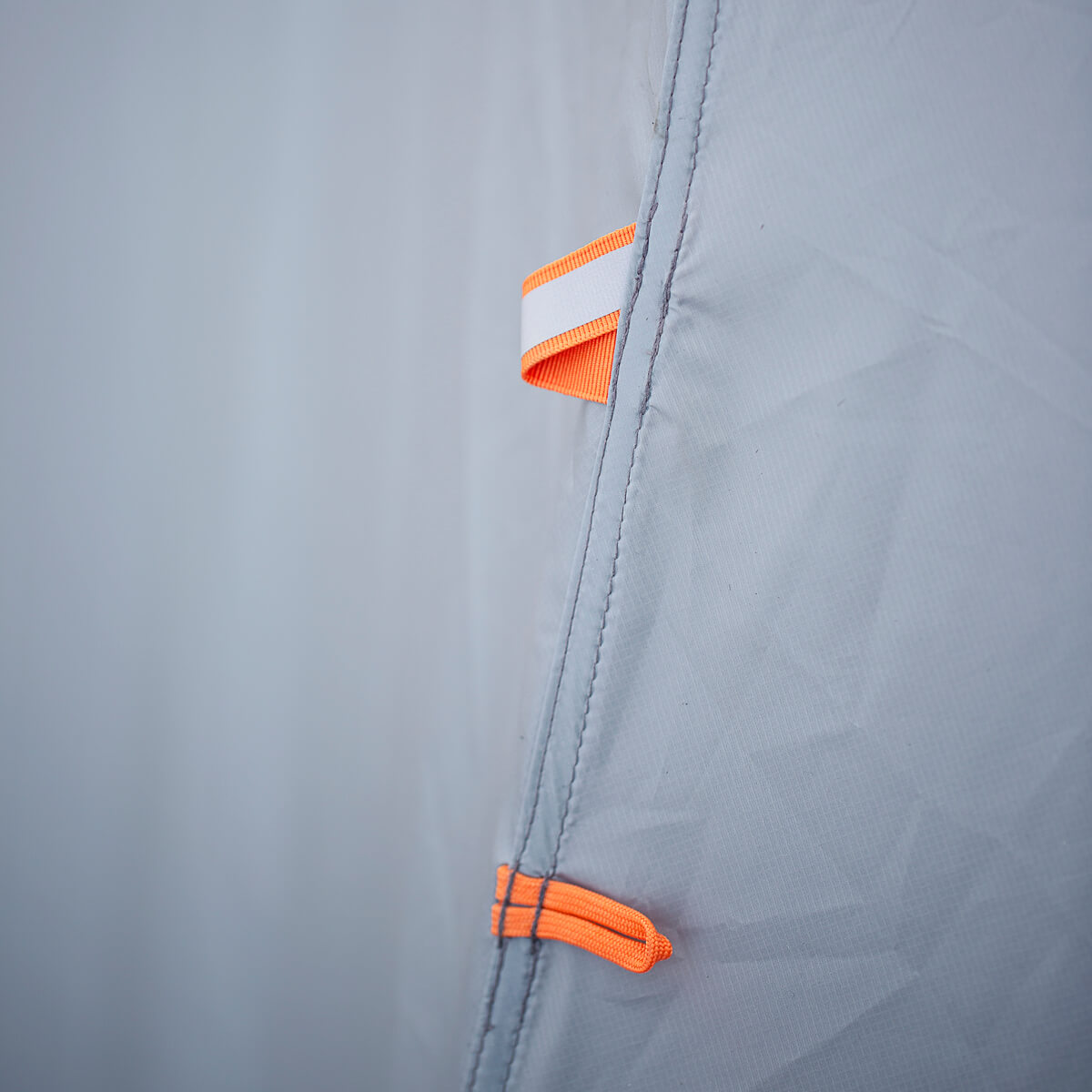
But how Waterproof is Waterproof?
The most important question about coatings that will drive a person insane is how waterproof is waterproof enough. A company can layer as much silicone or PU onto a fabric as they desire to increase the waterproofness of a tent. As a person that uses a tent, all you really care about is not having water come through your tent in a storm. So how much water-proofing do you really need?
The waterproof rating for a tent will typically be reflected by a number next to the coating. For example, for our rain fly's we use a 20D sil/sil fabric with a 2000mm coating on both sides. The 2000mm refers to the "hydrostatic head" rating of the fabric, which is a measurement of how much water pressure a fabric can withstand before water starts seeping through. 2000mm means that a column of water 2000mm high, or 2 meters high, would need to form before the water created enough pressure for it to start to seep through the fabric. Multiply that times 2 since the fabric is coated to 2000mm on both sides for an aggregate of 4000mm, and you would need a 4 meter column of water to break through. That's a lot of water and one hell of a storm. You could argue that a really windy, wet storm will press water against your tent creating a lot of pressure. But the amount of pressure created by a 2 meter column of water is significant and would never be reached (not even close), not even by the biggest rain storm.
Some companies will use a 3000mm, 5000mm or even higher coatings claiming it makes their tents more waterproof. The reality is while tents with those coatings are technically more waterproof, there is no real need to have that much coating on a tent in our humble opinion. If the coating is a PU coating, it can degrade the strength of the fabric as you add on more material, and importantly for backpacking tents, it makes them heavier unnecessarily.
Realistically, if you buy a backpacking tent from a reputable company, the fabric is not going to leak. Seams are where you will see your tent leak as the needles used to sew the fabric poke holes that allow water to get in. But I can't think of a single high end tent company that is making a tent with a fabric that would even come close to leaking. I would wager you are more likely to get small holes in your tent or rub it against a sharp rock and tear it before water will get through the coating.
We use double 2000mm coating on our rain fly's, as it is plenty waterproof for any rain, snow or other wet weather likely to be experienced in the mountains or desert, yet it doesn't add on unnecessary silicone that will increase the weight of the fabric. Couple that with our silicone coated thread to seal up the seams, and you have a naturally waterproof tent. We see it as a balance for durability and weight.
Tying it all Together
If you made it this far, congratulations. You likely know more than most people that use tents. Next time you're researching a tent, take a look at the specifications and don't be afraid to ask questions of the manufacturer. The details will impact the quality of the tent, and transparency is important for us when it comes to communication with our products and our customers. If you have any questions or comments, leave them below.